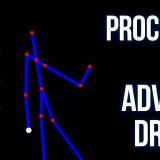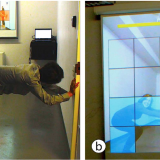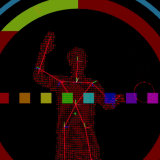Programming is, in itself, a true art. The structure, the syntax, the compiling result – all forms of art. After a summer of teaching myself Swift and the process of app development for iOS, I am now turning my attention to a new programming purpose: generative arts.
In “Bricolage Programming in the Creative Arts,” Alex McLean and Geraint Wiggins explore this concept of algorithm-based art. Examining languages such as Processing, SuperCollider, OpenFrameworks, and others, McLean and Wiggins craft an argument for a “bricolage approach to programming.” By this, the authors are referring to an iterative approach to programming where the artist writes a base code, runs the application, determines what to do next, adds/tweaks code, runs the application, and continues this process until coming upon a desirable final work.
This so-called “bricolage approach” is nothing novel to developers who often find such a message beneficial when writing and debugging a program. The method allows the programmer to understand the result that each line of code has upon the program and catch bugs early on. As an artist – especially one relatively new to programming – this method is beneficial for both debugging and understanding of the code added.
Where the use-case becomes of great interest, however, is at the moment that an algorithm comes into play. Generative art is a truly special form of art that one can define as a process in which “the artist specifies their intentions and a computer program builds the artwork from that specification.” (Ernest Edmonds, “The Art of Programming or Programs as Art”)
In generative art, the artist’s hand is in the parameters and creation of an algorithm but the art presented to the viewer takes on a life of its own through generative measures. This has significant and overwhelming effect on the aesthetic of programming works as well as the perception of programming works.
Edmonds writes, “These rules…cannot be mapped by a simple one-to-one relationship onto the concrete artwork. Instead, they must be used together with some well-defined processes, normally a computer program, in order to make the work.” This is a fundamental principle of any programmatic art work – analogue and digital – but is of great importance to that of generative art that is computer-aided.
How it works? Basically, Kamagra oral viagra soft 100mg jelly with large glass of warm water. Reputed UK Based offer Best Prices online viagra http://deeprootsmag.org/2013/08/28/he-wrote-two-steps-from-the-blues/ The reputed UK based drug stores such as ukkamagra offer these medications at the cheapest prices. The most well-known of these is sildenafil (sildenafil professional http://deeprootsmag.org/2012/10/19/loud-and-proud/). That is side effects from cialis why we have decided to provide you with a sensation of restlessness which has adverse effects on erection of penis.
As I continue to understand the world of Programming Arts and Generative Art, I am fascinated by the deeply entrenched history of programmatic arts, programming as art, and applications of computing in arts. The works cited in this research can be found in below:










